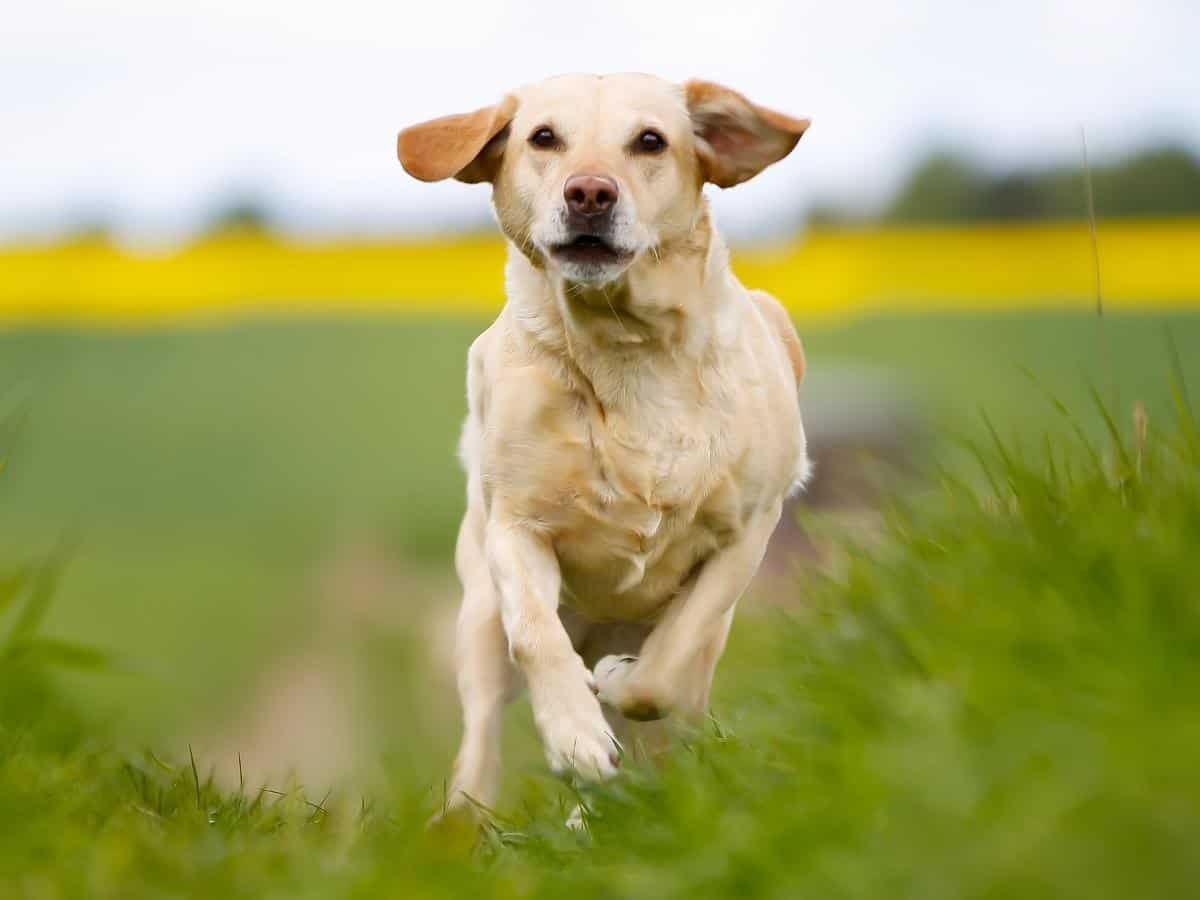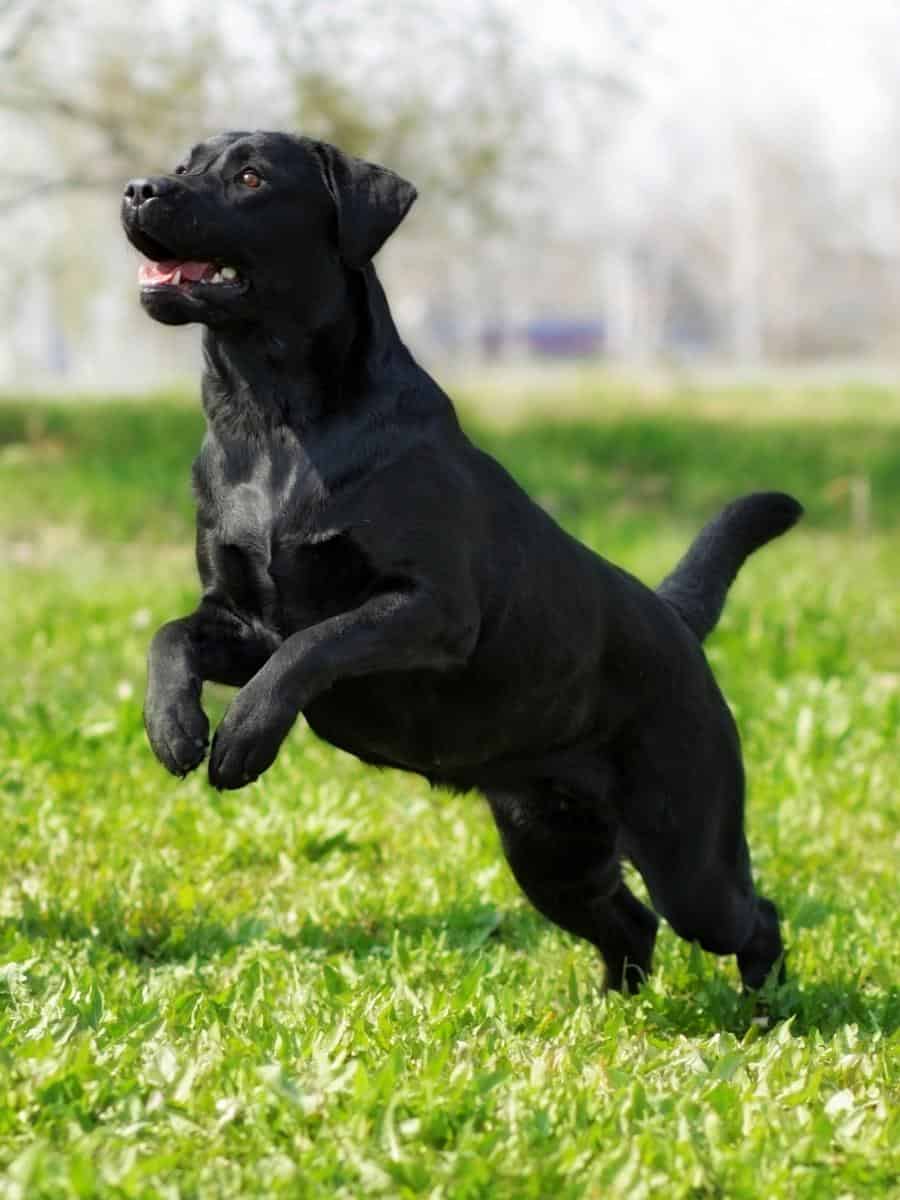When your Labrador Retriever has a reliable recall, you can take him on walks without a leash and impress your friends by using the recall as a party trick. But the most important reason to teach a Lab to come when called? You can prevent tragic accidents when you have the power to make your dog return to you on command.
Here’s how to train a Labrador recall in 7 easy steps:
- Use one recall command for one action only
- Gradually build the association with your trigger word
- Be consistent with the command
- Introduce distractions while strengthening recall
- Test the command in your backyard first
- Never use aversive training methods
- Double down on positive reinforcement

Keep reading because I’ll break down the seven steps to practice that will teach your Lab to come when called.
1. Obey the Single Word, Context, and Command Rule
When making your Labrador’s response more predictable, you must obey this rule:
Use a single word in a unique context to build a strong association between the command and specific action.
Because it is easy to use a recall command in almost any context, you might make the mistake of calling your dog in a wide range of situations and sometimes with different words. All these changing factors make it hard for the Labrador to associate the command with the action of coming back to you.
Pro-tip: Do not use common words like “come here” as your command for calling your dog, as these may be used in different conversations and can confuse him. Instead, use a more codified version that you’re less likely to use except when making your dog return to you.
2. Build Association Slowly
When training a Labrador recall, you must remember that you have no option except positive reinforcement. Since the command has to invoke enough positive feelings in your dog to prefer coming to you over any distraction, there cannot be even the slightest hesitation or doubt associated with being in your proximity.
So when you cannot even use humane punishments like the silent treatment, you have to set up your dog for success when you “test” the command.
By rewarding him for following the command, you can strengthen the trigger. But for the Lab to even respond to the command in the first place, you must build an association slowly.
Pro-tip: The easiest way to make your Lab “win” at recall is to fire the command when he is already running toward you. Rewarding the dog after this increases the likelihood of him following the command in the future.
3. Trigger the Command Consistently
You must start by commanding your Labrador to return to you while he is in the process of doing so. This makes room for reward, which sets the dog up for reliable recall. Using the command consistently when your Lab is already running towards you will lead to your dog being ready for the command to trigger the action and not just correlate with it.
Look for this to happen within 1-2 weeks of letting your recall command correlate with the Lab organically returning. Then, you can trigger the command to get the Labrador to return from a stationary position.
Do not use the word when the dog is engaged in something more exciting than coming to you. The command must be tested when the Labrador is likely to pass the test. And you should consistently use it in situations where the dog would anyway prefer to come to you.
Pro-tip: Upon completing a training session, spend some time playing with your pup. This study of Labrador Retrievers showed that playful activity after learning improved performance.

4. Make the Recall Reliable Before Introducing Distractions
A Labrador recall has different levels:
- At its easiest, the recall command can get the dog to come to you from a stationary position.
- At its most complex, the command results in the Lab leaving something he enjoys to return to you.
The latter is the desired effect, and the biggest obstacles are environmental distractions.
Once you feel confident that your Labrador knows what the recall command means, you must switch to self-control and discipline training.
But how?
Introduce distractions.
You can have a toy on a different side of your backyard and recall your Labrador Retriever while he is walking towards it.
But if you do this, the reward should be better than what the dog stops doing. In the case of toys, you can give him his favorite toy (which you initially hide behind your back) when he gives up going after an average toy because of your recall.
Gradually increase the distractions and obey the rule of setting up consequences for recall that are far more positive than what the dog gives up in its favor. You have to be thoughtful about rewards and distractions for three to four weeks. After that, a simple reward can be used.
5. Test the Recall in a Controlled Environment
Most Labrador owners make the mistake of immediately testing their recall command on their daily walks.
You should not try to recall your dog or walk him without a leash until he has proven to have a fairly predictable recall in a relatively distracting environment.
Here are 3 ways to create this environment in your backyard:
- Have friends come into the backyard
- Introduce new objects
- Play different sounds on your phone
6. Never Punish a Dog After Calling Him
This recommendation has more to do with preserving the association between the positive feelings from being close to you and the recall command.
Even when you don’t use the recall command, if you scold or punish the dog when he walks toward you, he starts fearing the act of coming to you.
Do you want to know the correct way to discipline your dog? Check out this article, How to Discipline a Labrador.
7. Double-Down on Positive Reinforcement
Doubling down on rewards as the key drivers for making your Lab’s recall more predictable works almost every time, but the duration of the process varies depending on the dog. In contrast, using fear or punishment to train recall never works.
So find ways to enable your dog to win at obeying the recall command instead of trying to have a “gotcha” moment. By the end, you will be surprised by how well he responds, even in the most distracting situations.
Watch How To Train Your Puppy To Come In This Video…
Conclusion: How to Teach a Lab to Come When Called
The key ways to train a Labrador recall include catching him in the act of running toward you, using your recall command, then rewarding him. Once the command correlates with the return (and the Lab notices the association), you can trigger the command to make the dog return to you.
As long as you do not test the Labrador’s recall too early and avoid punishing him, there is nothing wrong you can do when building the association between a specific word and the act of coming to you. Just remember, the initial rewards must outweigh the initial distractions!
Related Posts You May Like:





